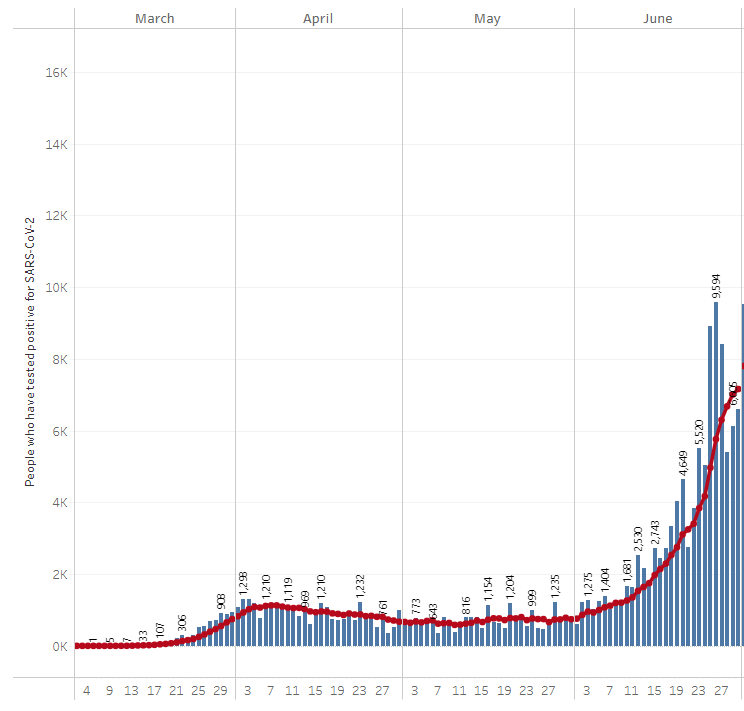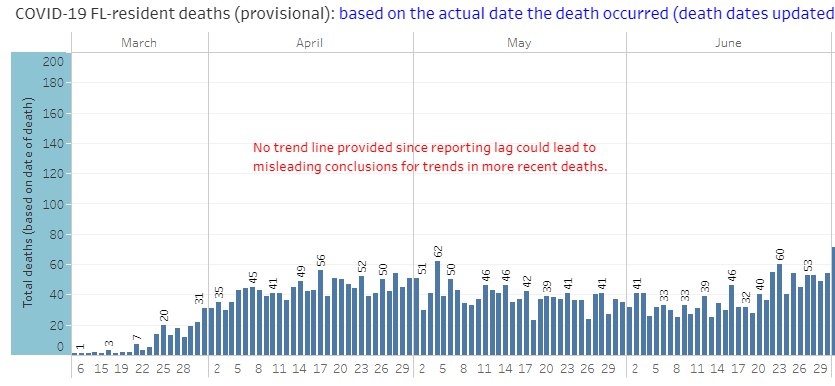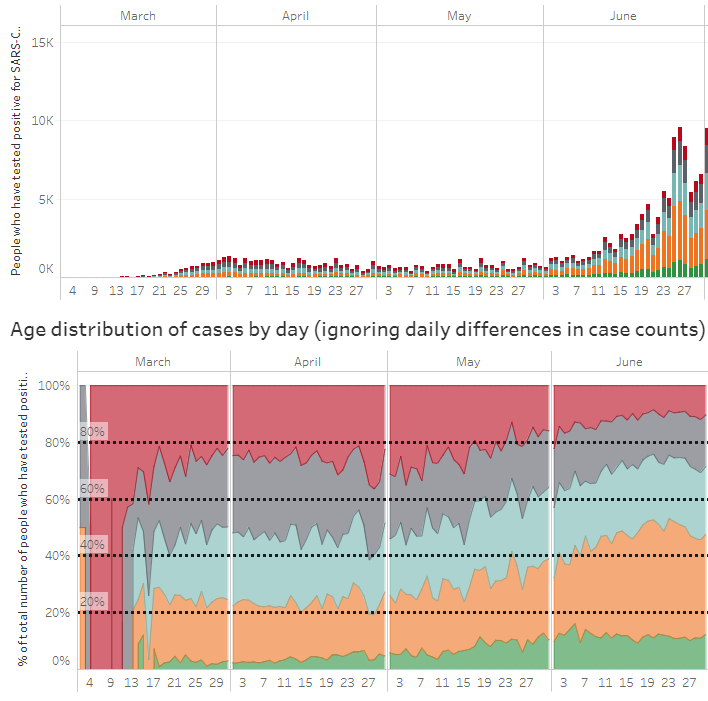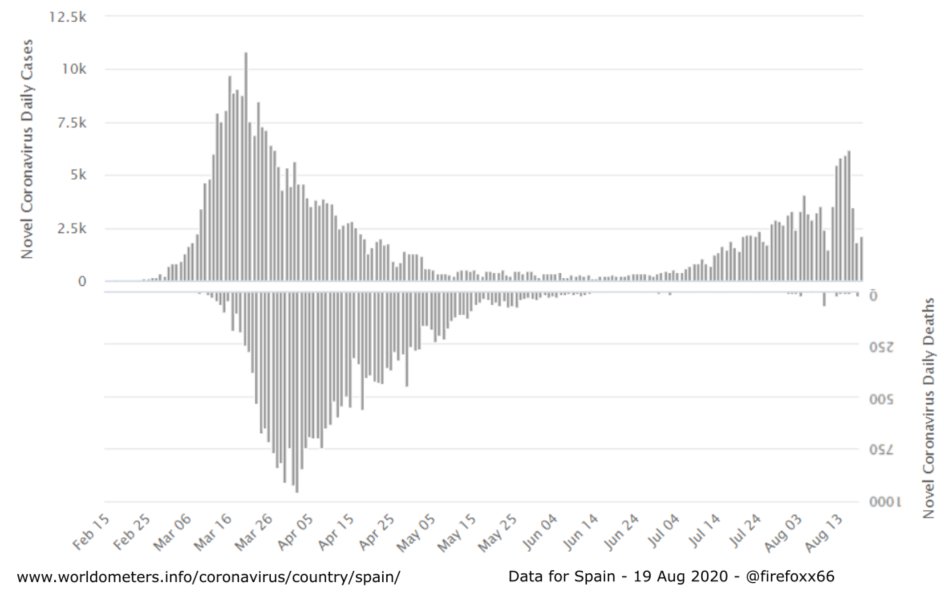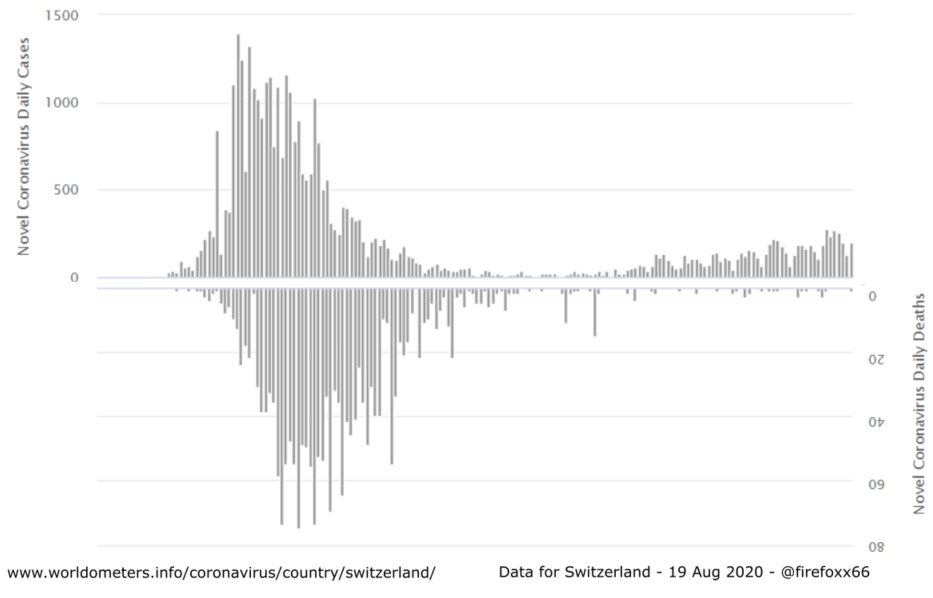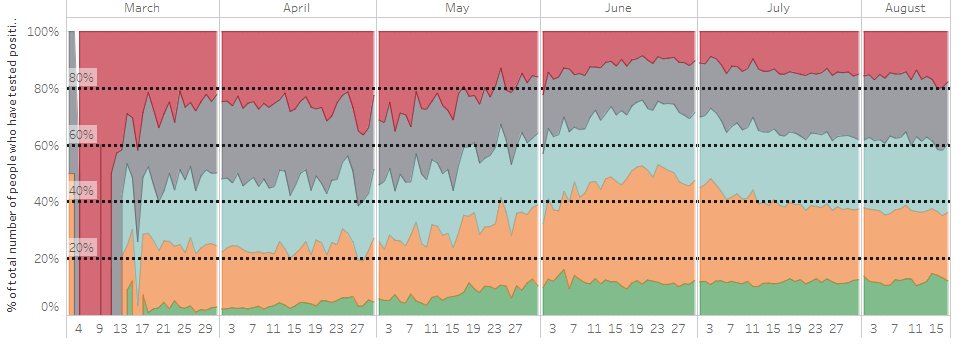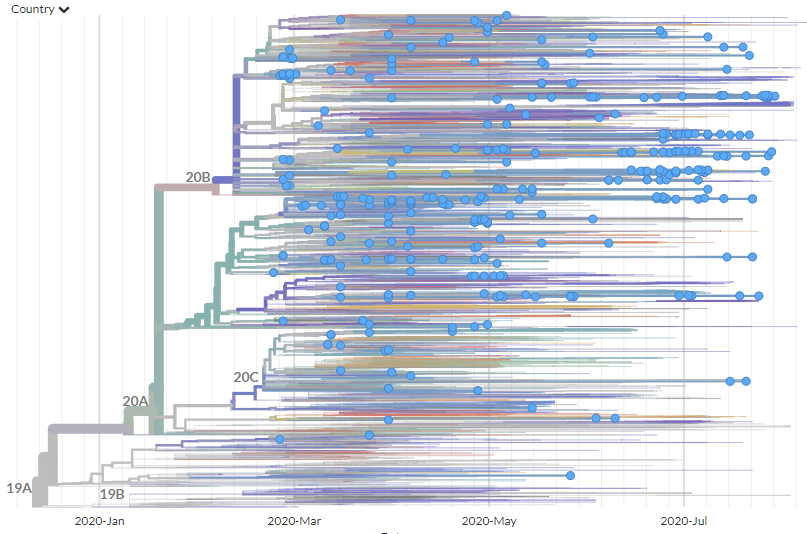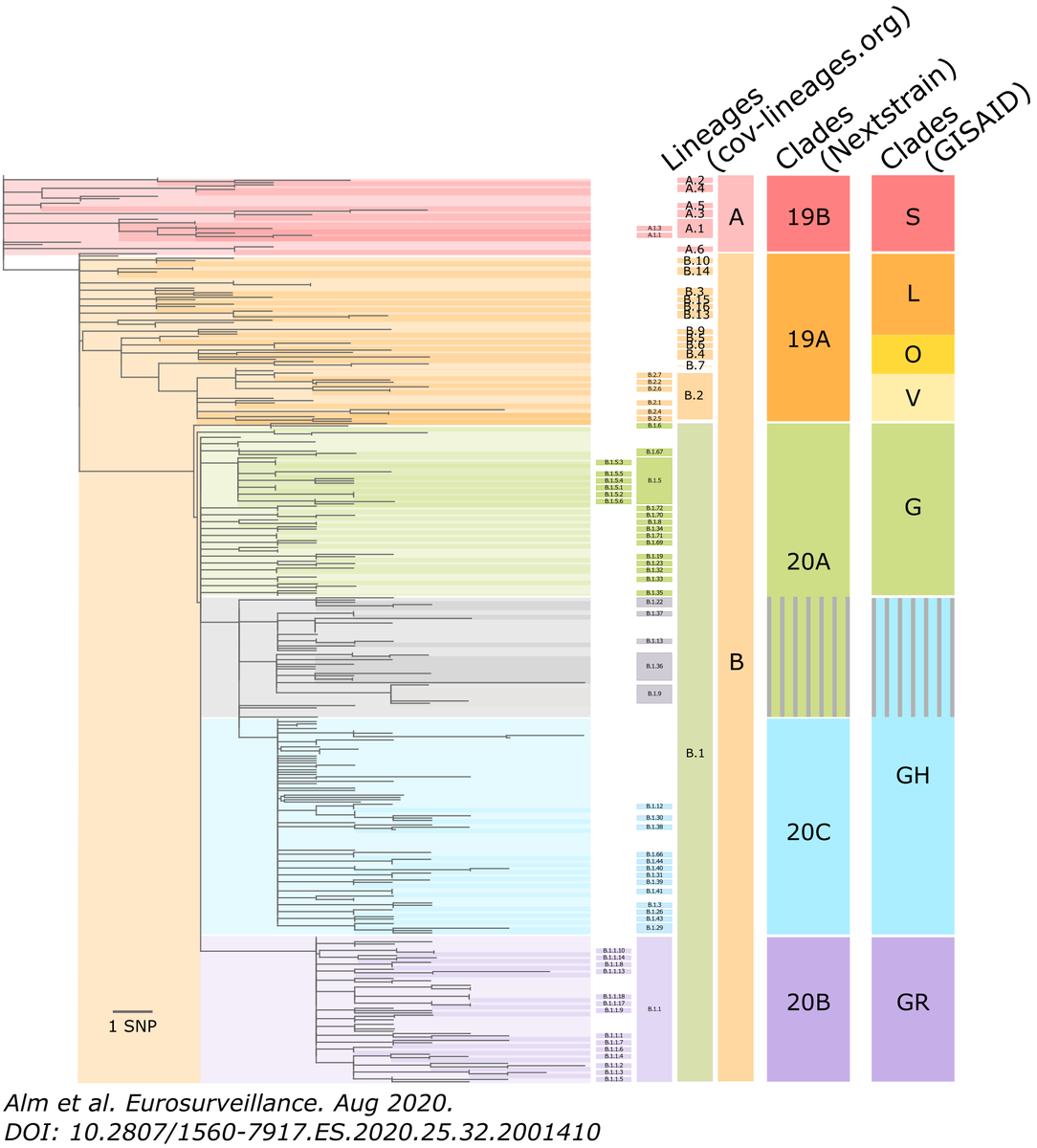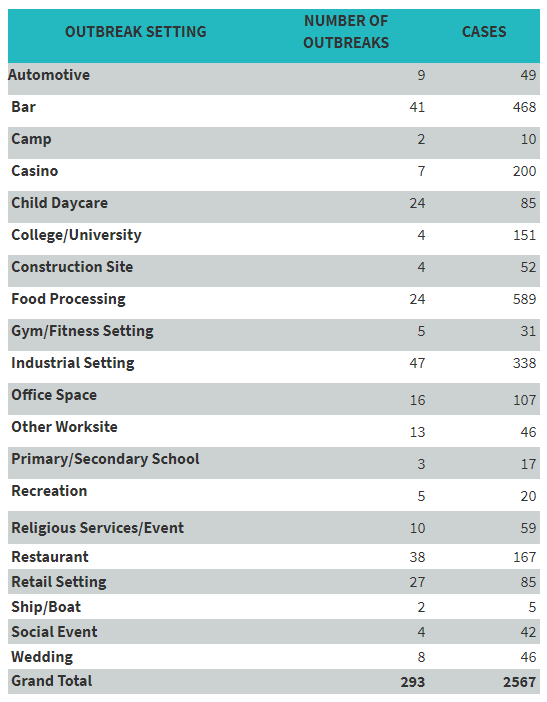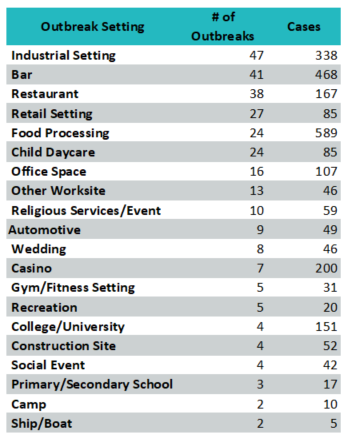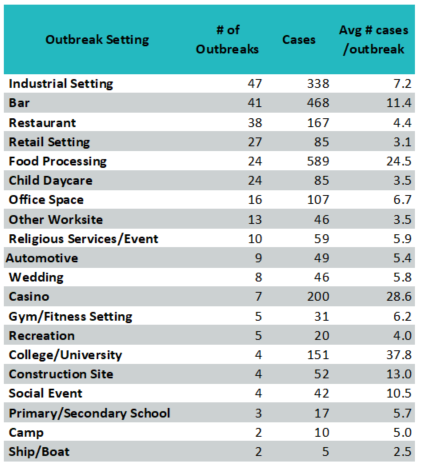1- More & more general testing (more likely to test any less symptomatic young ppl)
2- Elderly people being /more/ cautious
3- Young people being /less/ cautious
3/25
4/25
But do we really expect that cases will only stay in young people, and not spread to other age groups?
5/25
@zorinaq's heatmap shows this well: a slow burn in young age groups begins to spread upward to older individuals - those with higher risk of severe outcomes.
6/25
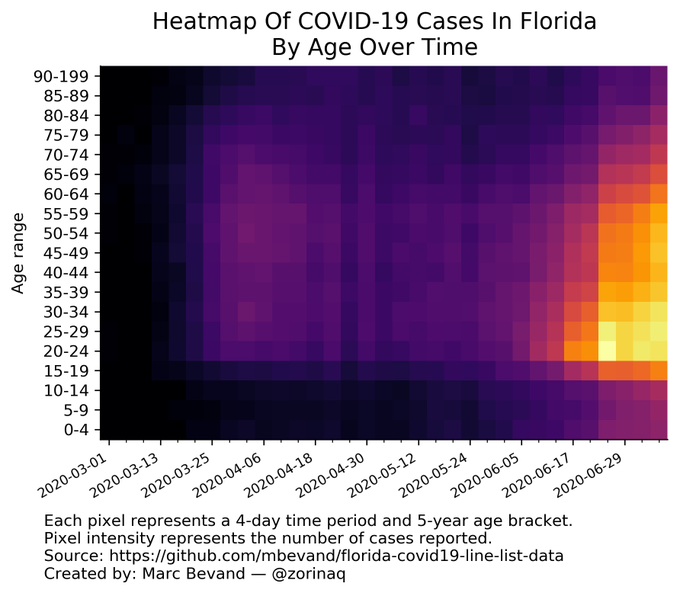
7/25
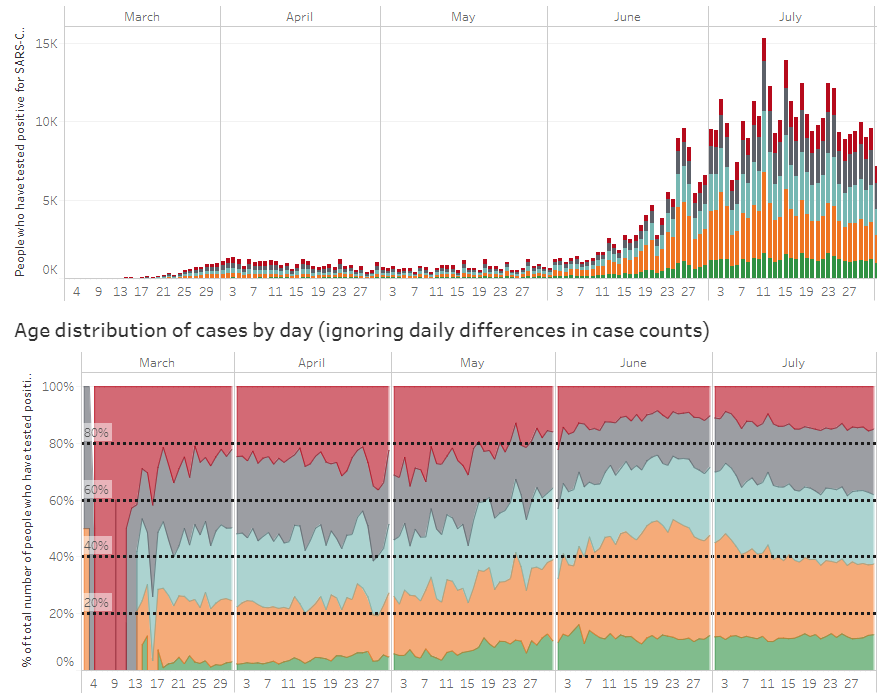
Florida (along with many other southern US states with similar patterns) has had a severe outbreak, & had to reverse reopening to contain it.
After having cases under control for so long, why did they fail to act? Why wait?
8/25
But more generally, as we've seen many times in this pandemic already: an inability to imagine it could get that bad, here.
9/25
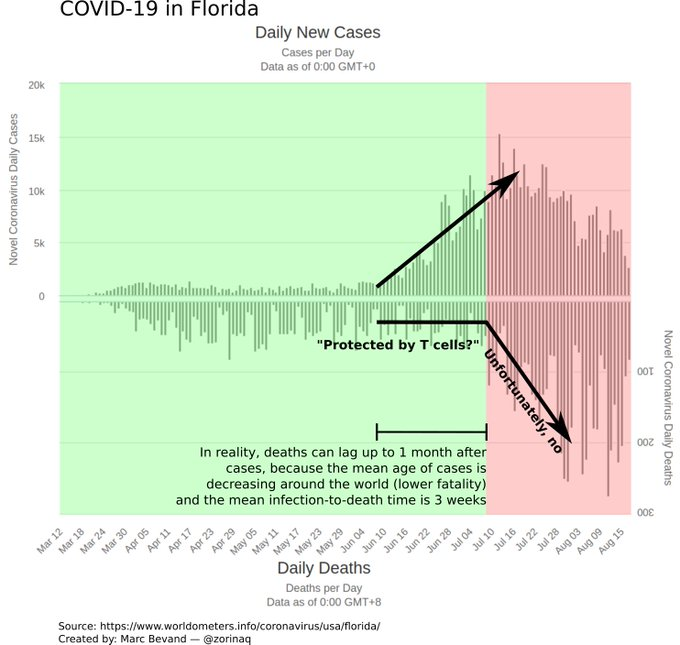
11/25
Distinctly higher proportion of cases in young people.
12/25
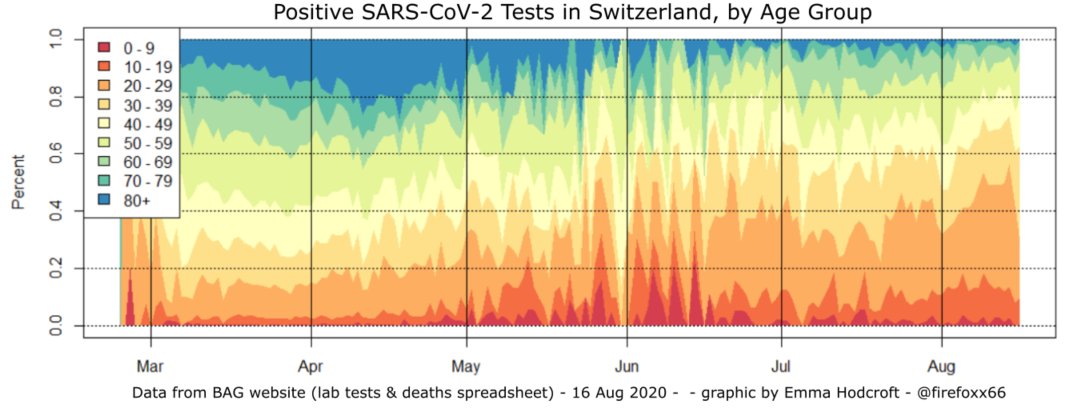
We can look into this, too.
14/25
The whole tree shows the entire diversity of the virus. The x-axis is time - dots are #SARSCoV2 sequences plotted when they were taken.
nextstrain.org/ncov/europe?f_…
15/25
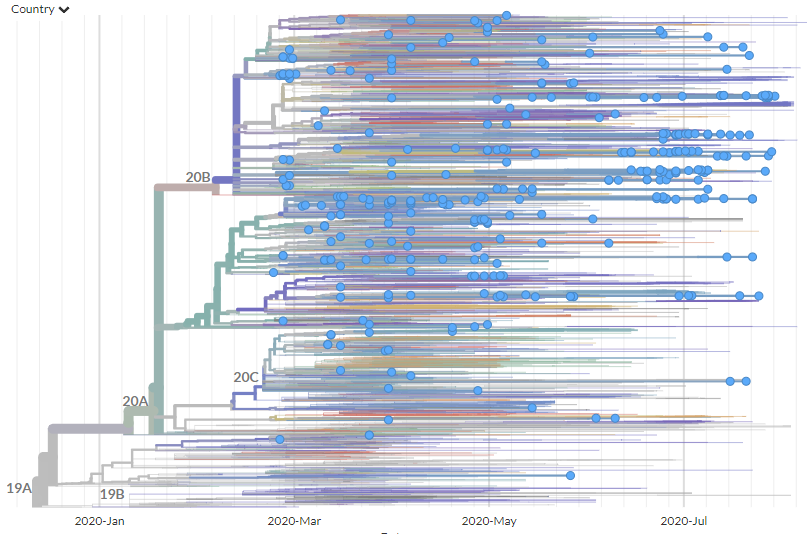
2nd - So, a 'less severe' mutation would have to arise in all/most of those independent lineages for us to see an effect
17/25
Instead, the increase in cases in younger people is likely responsible for this. The slower rise overall is thanks to masks, work from home, etc.
18/25
This *should* be a chance to avoid that outcome! Act now, & get cases under control.
19/25
And... I get why countries want to do this. We are all so, so sick of #COVID19.
20/25
We would all prefer if we could ignore this, focus on recovery, and it will just 'be ok.'
21/25
22/25
23/25
So we should head into winter with as few cases as possible - & a good plan
24/25
The curse of #SARSCoV2 seems to be that we aren't willing to look at what happens to others & imagine it could happen here too.
We want to wait & see it ourselves.
We can break that curse - let's act now.
25/25
@richardneher shows predicting case fatality ratio(CFR) on changing infected age groups matches what we observe. More cases in young = lower CFR

